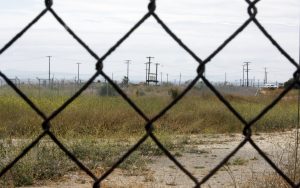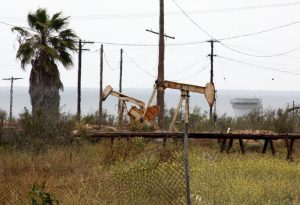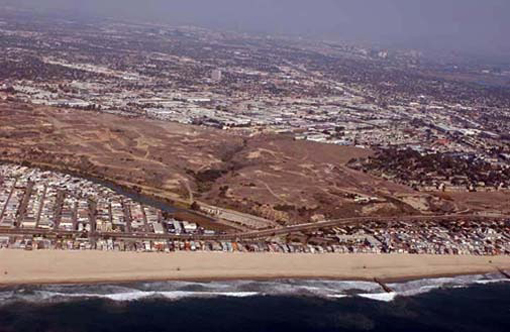
— NB Indy file photo ©
The fight over Banning Ranch got kicked up a notch this week following the release of the California Coastal Commission staff report that recommends a smaller footprint for the proposed mixed-use development project that goes before the CCC next week.
The Commission is scheduled to meet Wednesday through Friday in Newport Beach City Council chambers. Banning Ranch is on the Wednesday agenda. The meeting starts at 9 a.m.
Officials from both sides of the issue have been urging people to attend the meeting.
Coastal Commission staff’s recommendation is approximately one-third the size of the project the developer proposed.
Save Newport Banning Ranch group noted on social media that they would prefer that the entire property be designated open space and be open to the public.
“However, being realistic, I believe that the Coastal Commission staff has done a very good job and has made a reasonable recommendation,” Save NBR noted.
The staff’s suggested plan is “a big step toward our goal of saving and preserving” the property, said officials from Banning Ranch Conservancy.
They cautioned that they are only recommendations and that the commissioners can make any decision they want, including ignoring staff’s recommendations entirely.
On the other side of the issue, Newport Banning Ranch, LLC, the applicant, said they are “deeply troubled” with the CCC conclusions. NBR called the staff report a “de-facto denial of the project” and said that the recommendations would essentially kill the project. They will challenge the report’s conclusions, NBR officials confirmed.

— NB Indy file photo ©
“We negotiated in good faith for four years and believed we had reached a compromise that met environmental regulations and economic realities,” Mike Mohler said in a prepared statement from NBR.
They have worked in good fait to respond to the direction from CCC and have “overcome the obstacles placed in our path to do the right thing,” Mohler said.
They feel the suggested plan eliminates the proposed visitor serving programs and favors keeping the property fenced in perpetuity, which blocks coastal access to the public. It will likely result in the oil field remaining in place for years to come, he added. The site is currently a degraded industrial brown field from years of oil exploration and drilling, Mohler noted.
The version of the proposed development considered in the Coastal staff report is the NBR project from July 10.
On Aug. 23, the developer proposed additional changes to the project to address issues and reduce impacts, however, with only three days until the production deadline, CCC staff was unable to analyze the changes and reflect them in the report.
The proposed project includes: Abandon oil operations and clean and remediate soil; subdivide the 401-acre site into residential, commercial, mixed use, open space, park, and public street lots; grade approximately 2.8 million cubic yards of soil and construct residential and commercial development including approximately 12 acres of roads, 37 acres of residential with 895 residential units, 45,100 square feet of commercial use, a 75-room resort and 20-bed hostel; 5-acre park, public trail network; 329-acre nature preserve; and oil operations remaining on 15 acres.
Coastal Commission staff developed an extensive and complicated set of recommended conditions to accompany the recommended approval of the project.
Staff suggested a reduction from approximately 55 acres of developable land to 19.7 acres of identified developable space. The downsizing was primarily done to include the foraging grassland habitat of the burrowing owl. A buffer around the burrow habitat had already been included as an environmentally sensitive area, but the foraging are was left out.
Following “strong criticism” from professional biologists who noted that there is no other location within the vicinity where these owls can forage except for the open grassland on the Banning Ranch site. Without protecting the foraging space, there would be no food source and the owls would be extirpated from the site and from the region.

— Photo courtesy city of Newport Beach ©
NBR responded saying that the proposed plan provides an appropriate habitat for the one burrowing owl that has appeared on the site for no more than three to four weeks annually, Mohler said.
They also have a multi-species conservation plan that restores the natural flora and fauna of the coastline, Mohler added.
The staff report notes a number of sensitive coastal species and habitats on the property, including nesting and foraging habitat for the threatened California Gnatcatcher, a very rare vernal pool watershed that supports the Endangered San Diego fairy shrimp, coastal wetlands, habitat for burrowing owls, rare purple needlegrass grassland, and riparian habitat and coastal marsh lands.
“Despite its history of oil development and the presence of isolated areas that are severely degraded, the site as a whole continues to support a remarkable and unique array of sensitive coastal species and habitats,” CCC staff concluded. “There are a number of sensitive species using the property in its current disturbed, but still incredibly rich ecological state.”
Staff also noted in the report that cleanup should not be dependent on development of the property.
“The proposed development plan should be evaluated in its own right, not allowed to serve as a catalyst that results in more extensive clean-up and soil disturbance, under the guise of necessary clean-up, than would otherwise be necessary to remove contaminants and restore the property’s habitat value,” the report reads.
The issue of the cost to develop the site was also mentioned in the report.
“While the applicant may argue that, given the significant costs of developing the site, the amount of development that could occur consistent with staff’s recommended conditions does not provide an economically viable project, neither the Coastal Act nor the state and federal constitutional provisions prohibiting takings require that this Commission guarantee developers a profitable return on their investments,” CCC staff points out.
NBR has already invested millions on planning, engineering, and working with staff over the years, Mohler responded.
“We have done everything asked of us over the past decade to meet or exceed all requirements,” Mohler said.
The 172-page report also addresses Bluff Road, public access, Native American archeological cultural and historical significance, and much more.
For more information, visit coastal.ca.gov.




